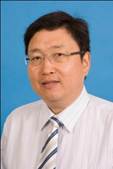题目:Electrocatalysis for Energy Conversion Processes
演讲人:乔世璋 教授(澳大利亚阿德莱德大学)
时间: 12月20日14:00
地点:化学A楼528演讲厅
邀请人:张帆 研究员
Electrocatalysis for Energy Conversion Processes
Shizhang Qiao
School of Chemical Engineering, The University of Adelaide, SA 5005, Australia
s.qiao@adelaide.edu.au
Abstract: Replacement of precious metal catalysts by commercially available alternatives is of great importance among both fundamental and practical catalysis research. Nanostructured graphene-based and transition metal materials have demonstrated promising catalytic properties in a wide range of energy generation/storage applications. Specifically engineering graphene and other 2 D materials with guest metals/metal-free atoms can improve their catalytic activities for electrochemical oxygen reduction reaction (ORR), oxygen evolution reaction (OER) and hydrogen evolution reaction (HER), thus can be considered as potential substitutes for the expensive Pt/C or IrO2 catalysts in fuel cells, metal-air batteries and water splitting process. In this presentation, I will talk about the synthesis of nonprecious metal and metal free elements-doped graphene, transition metal materials and their application on electrocatalysis [1-10]. The excellent ORR, OER and HER performance (high catalytic activity and efficiency) and reliable stability (much better than the commercial Pt/C or IrO2) indicate that new materials are promising highly efficient electrocatalysts for clean energy conversion.
References:
[1] Y. Jiao, S.Z. Qiao, et al., J. Am. Chem. Soc. 2018, 140, DOI: 10.1021/jacs.7b10817
[2] Y. Zheng, S.Z. Qiao, et al., Angew. Chem. Int. Ed. 2018, 57, DOI: 10.1002/anie.201710556
[3] T. Ling, S.Z. Qiao, et al., Nature Communications, 2017, 8: 1509.
[4] Y. Zheng, S.Z. Qiao et al., J. Am. Chem. Soc. 2017, 139, 3336.
[5] C.X. Guo, S.Z. Qiao et al., Angew. Chem. Int. Ed. 2017, 56, 8539-8543.
[6] Y. P. Zhu, S.Z. Qiao et al., Account of Chemical Research 2017, 50, 915.
[7] Y. P. Zhu, S.Z. Qiao et al., Angew. Chem. Int. Ed., 2017, 56, 1324-1328.
[8] Y. Jiao, S.Z. Qiao et al., Nature Energy 2016, 1: 16130.
[9] T. Ling, S.Z. Qiao et al., Nature Communications 2016, 7: 12876.
[10] Y. Zheng, S.Z. Qiao et al., J. Am. Chem. Soc. 2016, 138, 16174-16181.
Biography of Speaker:

Dr. Shi-Zhang Qiao is currently a professor (Chair of Nanotechnology) at School of Chemical Engineering of the University of Adelaide. His research expertise is in nanostructured materials for new energy technologies including electrocatalysis, photocatalysis, fuel cell, supercapacitor and batteries. He has co-authored more than 300 papers in refereed journals (over 31,000 citations with h-index 90), including Nature, Nature Materials, Nature Energy, Nature Communications, J. Am. Chem. Soc, Angew. Chem., Adv. Mater.. He has filed several patents and has attracted more than 12.0 million dollars in research grants from industrial partners and Australian Research Council (ARC).
Prof. Qiao was honoured with a prestigious ARC Australian Laureate Fellow (2017), ExxonMobil Award (2016), ARC Discovery Outstanding Researcher Award (DORA, 2013) and an Emerging Researcher Award (2013, ENFL Division of the American Chemical Society). He has also been awarded an ARC ARF Fellowship and an ARC APD Fellowship.
Prof. Qiao is a Fellow of Institution of Chemical Engineers (FIChemE), a Fellow of Royal Society of Chemistry (FRSC) and a Fellow of Royal Australian Chemical Institute (FRACI). He is currently an Associate Editor of Journal of Materials Chemistry A, and is a Thomson Reuters/Clarivate Analytics Highly Cited Researcher (Chemistry, Materials Science).



